Ford Transit
 | |
| Manufacturer | Ford Motor Company |
|---|---|
| Production | 1965–present |
| Predecessor | Ford Thames 400E Ford E-Series (from 2013) Ford Freestar (Mexico) |
| Class | Van |
The Ford Transit is a range of panel vans, minibuses, and pickup trucks, produced by the Ford Motor Company in Europe.
The Transit has been the best-selling light commercial vehicle in Europe for 40 years, and in some countries the term "Transit" has passed into common usage as a generic term applying to any light commercial van in the Transit's size bracket.
Although the Transit name has been in use by Ford since 1953, the first definitive Transit platform was launched in 1965. Since then, six million Transits have been produced across three basic platform generations (first debuting in 1965, 1986, and 2000 respectively), with various facelift models of each, carrying various generation and model designators depending on market. The fourth-generation Transit was officially launched in January 2013 at the North American International Auto Show in Detroit, making it the first Transit model to be simultaneously sold in both Europe and North America, where it will replace the ubiquitous Ford E-Series after 2014.
The Transit is a commercial vehicle, while the Tourneo is a Transit based 8 or 9-seat minibus, featuring back seats and back windows similar to a Minivan. Tourneo and Transit models run in parallel, with both being facelifted or updated at the same time. The Tourneo is also considered an executive transport vehicle and is often supplied with alloy wheels. The Tourneo was introduced in 1995. A smaller minivan version of the Tourneo, called the Tourneo Connect, was introduced in 2002, based on the Transit Connect.
1953–1965
- Known in Germany as the "first generation" Transit
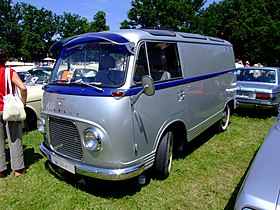 1964 Ford Taunus Transit | |
| Also called | Ford Taunus Transit |
|---|---|
| Production | 1953–1965 |
| Assembly | Cologne, Germany |
| Body style | 3/4-door van |
| Layout | FR layout |
Unlike the British-built Transit "family", the first production Ford to wear the "Transit" badge was a van built in Ford's Köln (Cologne) plant in Germany. It was introduced in 1953 as FK 1000 (Ford Köln carrying 1,000 kg). From 1961, this vehicle was called the Ford Taunus Transit. Production of this model ceased in 1965.
Naming system
The German vehicle was not widely exported, and the "Mark 1" tag has commonly been applied, retrospectively, to the 1965 to 1978 British model (see below). Whilst there have been three basic Transit platforms since 1965, the various facelifts and upgrades over the years have been referred to using a conflicting range of "Mark" numbers, with some sources counting a facelift as a new "Mark", some not. Ford's own historical look back at Transit production, published for the launch of the 1994 model, avoids the issue by referring to generations of Transit by years produced. This article attempts to make mention of all the common naming systems.
1965–1978
- UK "Mark 1"; Germany "Second generation"
 Mark I long-wheelbase Ford Transit with twin rear wheels and widened arches | |
| Production | 1965–1978 |
|---|---|
| Model years | 1966–1978 |
| Assembly | Genk, Belgium Langley, Slough, England, UK Southampton, UK Amsterdam, Netherlands Izmit, Kocaeli, Turkey |
| Body style | 3/4-door van |
| Layout | FR layout |
| Engine | 1.7L V4 2.0L V4 |
The first Ford Transit proper was introduced in October 1965, and has been in continuous production in three basic generations to the present day. The van was produced initially at Ford's Langley facility in Berkshire, England (a former Second World War aircraft factory which had produced Hawker Hurricane fighters), but demand outstripped the capability of the plant, and production was moved to Southampton, where it has remained, although on 25 October 2012 Ford announced the closure of Southampton in favour of the Turkish factory.Transits have also been produced in Ford's Genk factory in Belgium and also Turkey. Transits have been produced in Amsterdam for the local market from the mid 1970s until the end of 1981. This factory had ample capacity, since the Ford Transcontinental produced there had little success (total production 8000 in 6 years). Although the Transit sold well in the Netherlands, it was not enough to save the factory, which closed in December 1981. The Transit is also produced in China for the Chinese market.
The Transit was introduced to replace the Ford Thames 400E, a small mid-engined forward control van noted for its narrow track which was in competition with similar-looking but larger vehicles from the BMC J4 and J2 vans and Rootes Group's Commer PB ranges. In a UK market segment then dominated by the Bedford CA, Ford's Thames competitor, because of its restricted load area, failed to attract fleet users in sufficient numbers. Ford switched to a front-engined configuration, as did the 1950s by Bedford with their well-regarded CA series vans. Henry Ford II's revolutionary step was to combine the engineering efforts of Ford of Britain and Ford of Germany to create a prototype for the Ford of Europe of today—previously the two subsidiaries had avoided competing in one another's domestic markets but had been direct competitors in other European markets.
The Transit was a departure from the European commercial vehicles of the day with its American-inspired styling—its broad track gave it a huge advantage in carrying capacity over comparable vehicles of the day. Most of the Transit's mechanical components were adapted from Ford's car range of the time. Another key to the Transit's success was the sheer number of different body styles: panel vans in long and short wheelbase forms, pick-up truck, minibuses, crew-cabs to name but a few.
The engines used in the UK were the Essex V4 for the petrol-engined version in 1.7 L and 2.0 L capacities. By using relatively short V-4 engines Ford were able to minimise the additional length necessitated to place the engine ahead of the driver. Another popular development under the bonnet was the equipping of the van with an alternator at time when the UK market competitors expected buyers to be content with a dynamo.A 43 bhp (32 kW) diesel engine sourced from Perkins was also offered. As this engine was too long to fit under the Transit's stubby nose, the diesel version featured a longer bonnet. The underpowered Perkins proved unpopular, and was replaced by Ford's own "York" unit in 1974. For mainland Europe the Transit had the German Ford Taunus V4 engine in Cologne 1.7- or Essex 2.0-litre versions. The diesel version's long nose front was also used to accommodate the Ford 3.0-litre V6 in vans supplied to police and ambulance services. In Australia, the long-nose diesel front was used to accommodate an inline 6-cylinder engine derived from the Ford Falcon.
According to the show Top Gear, British police have reported that in the 1970s 95% of all robberies in which the criminals used a vehicle, involved this type of Ford Transit.
The adoption of live axles front and rear in place of a system incorporating independent front suspension that had featured on its UK predecessor might have been seen as a backward step by some, but on the road commentators felt that the Transit's wider track and longer wheelbase more than compensated for the apparent step backwards represented by Ford's suspension choices. Drivers appreciated the elimination of the excessive noise, smell and cabin heat that resulted from placing the driver above or adjacent to the engine compartment in the Thames 400E and other forward control light vans of the 1950s and early 1960s.
Together with the facelifted 1978 version (see below), this would be the longest lived of the Transit platforms, remaining in production for a total of 21 years.
1978–1986
- UK "Mark 2"; Germany "Third generation"
 Late Mark II Ford Transit | |
| Production | 1978–1986 |
|---|---|
| Model years | 1979–1986 |
| Assembly | Genk, Belgium Southampton, UK (1972−present) Amsterdam, Netherlands (1975–1981) Kocaeli, Turkey (Ford Otosan, 1976−present) |
| Body style | 3/4-door van 2-door pickup 4-door minibus 4-door crew cab 2-door chassis cab |
| Layout | FR layout |
| Engine | 4.1L I6 3.0L V6 1.6L V4 2.5L Diesel V4 2.0L V4 |
| Wheelbase | SWB: 2,690 mm (105.9 in) LWB: 3,000 mm (118.1 in) |
In March 1978, a facelifted version—commonly known in some markets as the "Mark 2" model—debuted with a restyled nose section, new interior, and the introduction of the Pinto engine from the Cortina in place of the Essex V4. Many fleet owners experienced premature camshaft wear in early Pinto units in the Cortina and for two years the Transit 75 was available with the 1.6 L Ford Kent "Xflo" engine. High-performance versions intended for police or ambulance use used the 3.0 L V6 version of the Essex engine, Australian variants had 4.1 L (250 cu in) inline 6-cylinder engines.
In 1984, the York diesel engine was redesigned into the 2.5 L "DI" (direct injection) unit. At this time this generation received a minor facelift including a grey plastic front grille with integrated headlamp surrounds, wraparound indicators, longer bumper end caps and multifunction rear lights incorporating fog, indicator, reversing and side lights for the panel van. This facelift did not commonly result in a new "Mark" number.
The Mark II was available in 6 body styles: Van, Kombi, Chassis Cab, Parcel Van, Bus and Crewbus all available in short-wheelbase (2690 mm) and long-wheelbase (3000 mm) versions. A selection of 5 engines was available: 1.6-litre OHC Petrol, 1.6-litre OHV Petrol (Kent), 2.0-litre OHC Petrol, 2.0-litre OHC Petrol (Economy) and 2.4-litre Diesel. On top of this were 32 door combinations, 6 axle ratios and options for 12 - 17 interior seats. All of these were available in any combination when purchased with Ford's highly customizable custom plan. At the time this gave the business sector an unprecedented amount of flexibility, which was a major factor in the vehicles' ultimate success.
1986–1991 & 1991–1994 minor facelift (VE6 & VE64 after facelift)
 Ford Transit | |
| Production | 1986–1994 |
|---|---|
| Model years | 1987–1994 |
| Assembly | Genk, Belgium Southampton, UK (1972−present) Amsterdam, Netherlands (1975–1981) Kocaeli, Turkey (Ford Otosan, 1976−present) |
| Body style | 3/4-door van 2-door pickup 4-door minibus 4-door crew cab 2-door chassis cab |
| Layout | FR layout |
| Engine | 2.9L V6 3.0L V6 2.5L DI I4 |
- UK "Mark 3" and "Mark 4" after facelift; Germany "Fourth generation"
The second generation Transit platform appeared in January 1986 and was notable for its all-new bodyshell which was of "one-box" design (i.e. the windscreen and bonnet are at the same angle), and the front suspension was changed to a fully independent configuration on SWB versions. The engine range was carried over largely unchanged from the last of the 1978-85 generation models, although in 1989 the high-performance 3.0 V6 petrol was replaced by the Cologne 2.9 EFI V6. A subtle facelift in 1992 saw the fully independent front suspension adopted across the range, whilst a redesigned floor plan allowed the use of single, rather than paired, rear wheels on the LWB derivative, further increasing payload—these models are identifiable by the slightly more rounded front headlamps.
1994–2003 (VE83)
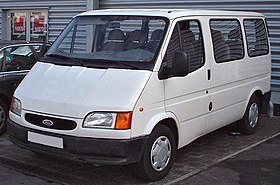 Ford Transit 1994–2000 generation | |
| Also called | Ford Tourneo |
|---|---|
| Production | 1995–2000 1995–2003 (Vietnam) |
| Model years | 1995–2003 1995–2000 (Vietnam) |
| Assembly | Genk, Belgium (1965−2000) Southampton, UK (1972−present) Amsterdam, Netherlands (1975–1981) Kocaeli, Turkey (Ford Otosan, 1976−present) İnönü, Turkey (Transm. and engine, 1982−present) Płońsk, Poland (CKD, 1995−2000) Obchuk, Belarus (Ford Union, CKD, 1997−2000) Hai Duong, Vietnam (1998−present) |
| Body style | 3/4-door van 2-door pickup 4-door minibus 4-door crew cab 2-door chassis cab |
| Layout | FR layout |
| Engine | 2.0L I4 2.5L DI I4 |
- UK "Mark 5"; Germany "Fifth generation"
A major facelift to the Transit in 1994/5 gave the Transit a new nose and dashboard, along with the 2.0 L DOHC 8-valve engine as found in the 1994 to 1998 Ford Scorpio. It is similar to the earlier Sierra DOHC unit but without the distributor and uses the updated OBD II-compliant EEC-V level engine control unit. Some of Ford's 16-valve engines, such as those found in the Scorpio,Escort RS2000 and Galaxy were also based on this block. At the same time air conditioning, electric windows, central locking, electric mirrors and airbags were all made available as optional extras.
The turbo diesel version came in 85 PS (63 kW), 100 PS (74 kW) and 115 PS (85 kW) version with an electronic fuel pump.
For the 30th anniversary of the Transit in 1995 Ford released a limited edition model called the Transit Hallmark. Six hundred were made and were available in three colours with 200 being made in each.
In Europe the VE83 Transit was available up to 2000, but in Vietnam it was built up to 2003 when it was exchanged in June for the new generation.
2000–2006 (V184/5)
- UK "Mark 6"; Germany "Sixth generation"
 Ford Transit | |
| Also called | Ford Tourneo |
|---|---|
| Production | 2000–2006 2003–2006 (Vietnam) |
| Model years | 2001–2006 2004–2006 (Vietnam) |
| Assembly | Southampton, UK (1972−present) Amsterdam, Netherlands (1975–1981) Kocaeli, Turkey (Ford Otosan, 1976−present) İnönü, Turkey (Transm. and engine, 1982−present) Płońsk, Poland (CKD, 1995−2000) Obchuk, Belarus (Ford Union, CKD, 1997−2000) Hai Duong, Vietnam (1998−present) |
| Body style | 3/4-door van 2-door pickup 4-door minibus 4-door crew cab 2-door chassis cab |
| Layout | Front-engine, front-wheel drive / rear-wheel drive or four-wheel drive |
| Engine | 2.3L I4 2.0L I4 |
| Transmission | 6-speed manual |
The next Transit, introduced in July 2000, was the third all-new design, and borrowed styling cues from Ford's "New Edge" designs like the Focus, and Ka. Developed by Ford in the United States, the main innovation is that it is available in either front- or rear-wheel drive. Ford nomenclature makes this the V184 (rear-wheel-drive) or V185 (front-wheel-drive) model. This model features the "Puma"-type Duratorq turbo diesel engine also used in the 2000 Mondeo and Jaguar X-Type, with the petrol versions moving up to the 2.3 L 16-Valve edition of the straight-4 engine. With this engine, the Transit can reach 60 mph (97 km/h) in 21 seconds and reach a top speed of 93 miles per hour (150 km/h), returning it to car-like performance as claimed for the earliest models. A demonstration of this model's speed was shown on Top Gear in 2005, where German race driver Sabine Schmitz attempted to drive it around the Nürburgring in under ten minutes, matching Jeremy Clarkson's time in a turbodiesel Jaguar S-Type; she was unsuccessful, but only by a few seconds.
This version won the International Van of the Year 2001.
The Durashift EST automatic transmission (optional on all rear-wheel-drive models) features controls mounted on the dashboard, a specially adapted manual mode, tow-haul mode, economy mode and winter mode.
2002 saw the introduction of the first High Pressure Common Rail diesel engine in the Transit, with the launch of the 125 PS (92 kW) HPCR 2.0-litre in the FWD. Production of the van started at the new Ford-Otosan plant in Kocaeli, Turkey which saw the end of all production at the Genk, Belgium plant which had been producing Transits since 1965. This coincided with the introduction of the Transit Connect (also produced in Kocaeli), a smaller panel van based on the C170 (Focus) platform and aimed at replacing the older Escort and Fiesta based models. Despite the name, the Connect has no engineering commonality with the full-size Transit.
2003 saw a new instrument cluster with a digital odometer.
2004 saw the launch of the first RWD HPCR, the 135 PS (99 kW) 2.4-litre variant that also introduced the 6-speed MT-82 RWD manual gearbox.
The five millionth Transit rolled off the Southampton line on Monday, 18 July 2005 and was donated to an English charity.
2006–present
China (VJX6541DK-M)
 | |
| Production | 2006–present |
|---|---|
| Model years | 2007–present |
| Assembly | Nanchang, China |
| Body style | 4-door van |
| Layout | FR layout |
| Platform | JX6541DK-M |
| Engine | 2,771 cc (2.8 L) I6 |
| Wheelbase | 140.55 in (3,570 mm) |
| Length | 213.31 in (5,418 mm) |
| Width | 77.27 in (1,963 mm) |
| Height | 87.87 in (2,232 mm) |
| Kerb weight | 1,920–2,030 kg (4,233–4,475 lb) |
The Ford Transit VJX6541DK-M is the Chinese version and it based on its predecessors of the fourth and fifth generation. This generation is only built in Nanchang by Jiangling Motors and is reserved for the Chinese domestic market. Remarkable are the much larger headlights and the larger grille. The model was launched to the market in 2006. Overall, the generation have 70 improvements to its predecessor. The interior has been changed and made more ergonomic. Power windows are standard, but ABS is optional. The Chinese Transit is available with two diesel engines and one petrol. One of them has a power of 67.6 kW (Type JX493ZQ3), the other 68 kW (JX493ZQ4). Both diesels have a capacity of 2,771 cc. The Petrol version uses a Ford Barra engine 190 kW inline-6 motor.The top speed is specified at 68.35 mph (110 km/h). The Chinese Transits have a VIN in following form: LJXBMCH1××T××××××.
The European 2006 Ford Transit went into production in 2008. On the Chinese market it is known as the New Transit. It is offered parallel to the 2006 China generation. The two facilities are currently manufacturing 300,000 units annually. Ford and Jiangling want to open a third plant in late 2012 to increase the annual production to further 3,000 units.
In January 2010, the Toyota recalls affected the products of the Ford Group because Ford used the same supplier (CTS Corporation). It was suspected that the accelerator pedals were defective and posed a danger. About 1600 Ford Transits of the 2006 China generation were affected by the recall.
The European models of the VE6 and VE8 generation can be given an aftermarket facelift to the Chinese version. This needs the Chinese components and manual skills.
Europe (V347/8)
 | |
| Also called | Ford Tourneo |
|---|---|
| Production | 2006–present 2008–present (China) |
| Assembly | Southampton, UK Amsterdam, Netherlands Kocaeli, Turkey (Ford Otosan) İnönü, Turkey (Transm. and engine, 1982−present)Hai Duong, Vietnam Tatarstan, Russia (Ford Sollers) Nanchang, China |
| Body style | 3/4-door van 2-door pickup 4-door minibus 4-door crew cab 2-door chassis cab |
| Layout | Front engine, front-wheel drive / rear-wheel drive / four-wheel drive |
| Engine | 2.2L Duratorq TDCi I4 2.4L Duratorq TDCi I4 3.2L Duratorq TDCi I5 2.3L Duratec I4 |
| Transmission | 5-speed manual 6-speed manual |
| Wheelbase | 2,993 mm (117.8 in)3,749–4,318 mm (147.6–170.0 in) SWB Pickup Trucks: 3,137 mm (123.5 in) MWB Pickup Trucks: 3,504 mm (138.0 in) LWB Pickup Trucks: 3,954 mm (155.7 in) |
| Length |
FWD: 5,230 mm (205.9 in)
1/3-Way Tipper 350M: 5,715 mm (225.0 in)Minibus FWD: 3,300 mm (129.9 in) RWD: 4,883 mm (192.2 in) 14-Seat Bus RWD: 5,690 mm (224.0 in) 17-Seat Bus RWD: 6,403 mm (252.1 in) SWB Pickups: 5,118 mm (201.5 in) MWB FWD Pickup: 5,481 mm (215.8 in) MWB RWD Pickup: 5,485 mm (215.9 in) LWB Pickups: 5,935 mm (233.7 in) 6,319 mm (248.8 in) & 6,317 mm (248.7 in) 1-Way Tipper 350L: 6,183 mm (243.4 in) 1/3-Way Tipper Cutaway SWB: 5,317 mm (209.3 in) Cutaway LWB: 5,673 mm (223.3 in) & 5,934 mm (233.6 in) |
| Width | FWD: 2,032 mm (80.0 in) FWD: 1,974 mm (77.7 in) RWD: 2,084 mm (82.0 in) SWB Pickups: 2,374 mm (93.5 in) MWB & LWB Pickups: 2,492 mm (98.1 in) Cutaway SWB: 1,972 mm (77.6 in) Cutaway LWB: 2,047 mm (80.6 in) |
| Height |
Vans: 2,070 mm (81.5 in), 2,077 mm (81.8 in), 1,999 mm (78.7 in), 2,083 mm (82.0 in), 2,304 mm (90.7 in), 2,385 mm (93.9 in), 2,392 mm (94.2 in), 2,302 mm (90.6 in), 2,363 mm (93.0 in), 2,389 mm (94.1 in), 2,394 mm (94.3 in), 2,623 mm (103.3 in), 2,624 mm (103.3 in) & 2,398 mm (94.4 in)
SWB Pickups: 2,032 mm (80.0 in), 2,035 mm (80.1 in) (also a high-end dimension on an MWB RWD pickup), 1,974 mm (77.7 in) & 2,030 mm (79.9 in) (also an upper-end RWD LWB pickup dimension)MWB Pickups: 2,005 mm (78.9 in), 2,017 mm (79.4 in) & 2,023 mm (79.6 in) LWB Pickups: 2,031 mm (80.0 in), 2,018 mm (79.4 in), 2,015 mm (79.3 in), 2,025 mm (79.7 in) & 2,016 mm (79.4 in) Cutaway: 2,080 mm (81.9 in) |
| Kerb weight | 1,800 kg (3,968 lb) (2.2L Duratorq, medium wheelbase, medium roof, panel van) |
- UK "Mark 7"; Germany "Seventh generation"
In August 2006, the Transit received a facelift to the body, including new front and rear lights, a new front end and a new interior featuring the gearstick on the dashboard and Ford's new corporate radio design. Besides the styling changes, the powertrains were revised. The old petrol engine was replaced with one from the Ford Ranger, the front-wheel-drive diesel went from 2.0 to 2.2 litres capacity, and all diesel engines gained high-pressure common rail (TDCi) systems. The powertrains were changed to meet new emissions legislation. The new version (Ford nomenclature V347 for front-wheel drive and V348 for rear-wheel drive) won International Van of the Year for 2007 despite tough competition from several all-new rivals. This Transit arrived in Mexico to replace the Freestar after the 2007 model year. This was the first Transit having a five-cylinder engine.
Mid-2006 saw the launch of the "Sport Van", a limited production Van featuring the 130 PS (96 kW) engine with additional styling parts, "Le Mans" stripes and 18-inch alloy wheels.
Late-2007 saw the launch of the 140 PS (103 kW) engine for front wheel drives (replacing the 130 PS) complete with the VMT6 6-speed manual transaxle to cope with the extra power.
The 6-speed transaxle was introduced on the mid-power FWD in late 2008 when the 110 PS (81 kW) engine was upped to 115 PS (85 kW).
In late-2008, the "coated Diesel Particulate Filter" (cDPF)—designed to meet higher emission standards than the current Euro IV requirement—was introduced as an option on all diesel engines.
Engines
- 2.2 l Diesel, 63 kW (85 PS); 2006–2012
- 2.2 l Diesel, 81 kW (110 PS); 2006−2008
- 2.2 l Diesel, 85 kW (115 PS); 2008–2012
- 2.2 l Diesel, 96 kW (130 PS); 2006−2007
- 2.2 l Diesel, 103 kW (140 PS); 2007–2012
- 2.4 l Diesel, 74 kW (100 PS); 2006–2012
- 2.4 l Diesel, 85 kW (115 PS); 2006–2012
- 2.4 l Diesel, 103 kW (140 PS); 2006–2012
- 3.2 l Diesel, 147 kW (200 PS); 2007–2012
- 2.3 l Petrol, 107 kW (146 PS); 2006–2012
Special editions
County 4x4
A handful of companies offered four-wheel-drive conversions, such as County Tractors of Knighton in Powys,who converted vans on behalf of Ford as a Special Vehicle Operations factory option. The first Transit County models were based on the Mk2 Transit model, both long and short wheelbase. The conversion used a Dana 44F front axle and a NP208 transfer box, both lifted from the Ford Bronco, coupled to the regular Transit engine, gearbox and rear axle using three custom propshafts. The Transit rear axle was retained, mounted to a rear subframe or 'lift cradle' to give the extra ride height. Other modifications were 16-inch wheel rims, locking front hubs, a heavy-duty steering box and 305 mm diameter front brake discs.
With the introduction of the Mk3 Transit in 1986 came the next generation of the County 4x4. This would prove to be a very popular and successful version of the County Transit 4x4, and the last to use the Dana beam axle layout. Later County 4x4 models switched to using an independent front suspension setup which was inherently more complex in design than the earlier beam axle models. Later panel vans also lost the twin-wheel rear axle that had been fitted on earlier LWB versions.
Mainly used by utility companies such as National Grid, the Ministry Of Defence, and by mountain rescue teams, the Transit County 4x4 proved to be a capable vehicle both on and off road, with the ability to carry both crew and equipment just about anywhere.
Design and supply of drivetrain components for County 4x4 models passed to Countytrac, a division of M.J. Allen Ltd, who are still involved in the development of the latest Mk7 AWD Transit and Connect models.
Transit XXL
To celebrate the Transit's status as International Van of the Year 2007, Ford built this stretch style van — the Transit XXL. It is a unique special that is among the most expensive Transits ever.
2012-present
- UK "Mark 8"; Germany "Eighth generation"; North America "T-Series"
 Full size Transit (North American model) | |
| Also called | Ford Tourneo (passenger van, outside North America) |
|---|---|
| Production | Fall 2013-present |
| Model years | 2014-present |
| Assembly | Kocaeli, Turkey (Ford Otosan) Claycomo, Missouri, U.S. (Kansas City Assembly) |
| Predecessor | Ford E-Series |
| Class | Full-size van |
| Body style | Cargo van Passenger van Chassis cab Cutaway van |
| Layout | FF layout (Europe only) FR layout (all markets) F4 layout (Europe Only) |
| Engine | Diesel engines 2.2L Duratorq TDCi I4 (Europe only) 2.4L Duratorq TDCi I4 (Europe only) 3.2L Duratorq/Power Stroke TDCi I5 (All markets) Petrol engines 2.3L Duratec I4 (Europe only) 3.7L Cyclone V6 (North America only) 3.5L EcoBoost V6 (North America only) |
| Transmission | 6-speed automatic 6-speed manual |
| Wheelbase | Cargo & passenger van 3,302 mm (130.0 in) (regular) 3,759 mm (148.0 in) (long) Cab chassis & cutaway 3,505 mm (138.0 in) (short) 3,962 mm (156.0 in) (regular) 4,521 mm (178.0 in) (long) |
| Designer(s) | Paul Campbell |
First images of the fourth generation Transit were shown in September 2012, however full details were not released until December.This version will also form the basis of the North American variants which will replace the Ford E-Series in the American and Canadian markets, and will be produced in Claycomo, Missouri, the plant that used to build the original and previous-generation Ford Escape models. The second generation Transit Connect will also share styling cues with the two larger Transits, but will again share little engineering commonality, and is also expected to launch at the same time in 2013. A new, smaller mid size variant known as the Transit Custom - closer in size to the Volkswagen Transporter and Mercedes-Benz Vito was unveiled at the first officially seen at the 2012 Commercial Vehicle Show at theNational Exhibition Centre in Birmingham, England. This revealed that the design language for the new Transit family takes styling cues from Ford of Europe's Kinetic Design philosophy, with a cab and dashboard design showing influences from the third generation Ford Focus. Leaked US patent drawings show that the corresponding next generation Transit Connect and full-sized Transit will use the same design language as the Custom.
The Transit Custom was first officially seen at the 2012 Commercial Vehicle Show at the National Exhibition Centre in Birmingham, England.
From launch, the Transit has never been officially sold in North America, despite in part being developed by Ford in the United States. The model's only foray into the Americas so far has been in Mexico where the Transit debuted in 2007. Ford has stated that the fourth generation Transit platform will be global, also acting as a replacement for the long running E-Series range in the United States and Canada.
In October 2011, Ford confirmed the North American version, by the retooling of the facility in Kansas City, Missouri for its assembly. Ford also registered trademark applications for Ford T-250, T-350, T-450, and T-550, which indicates that the Transit will likely follow the same naming scheme as the E-Series to differentiate itself from the smaller, mechanically unrelated Transit Connect that was introduced in North American in 2010.
Due to its four-cylinder diesel engines, manual transmission, lower weight and more aerodynamic design, the Transit is considerably more fuel efficient, although less powerful than the E-Series, which is a mainstay with a V8 and automatic transmission. Currently the E-Series competes in North America with the Mercedes-Benz Sprinter, one of the Transit's main rivals in Europe.
Media
A number of promotional Supervans were built, combining the outline and appearance of the Transit with the chassis and performance of a sports racing car.
A Mark 3 Transit was used by Jeremy Clarkson in Top Gear's Man With Van Challenge, finishing second (vs a tiny Suzuki Super Carry and huge LDV Convoy). This involved buying a van for under £1000, and several tests representing (stereo)typical van use: a quarter-mile drag race (cross-city speed); loading, carrying, and disgorging a load of furniture (space, access); tailgating (visibility, control); replacing a "damaged" door (maintenance); a police chase (handling), etc. The Transit upheld its reputation for agility by performing particularly well in the final chase, "resisting arrest" much longer than the slow LDV and unstable Suzuki, which overturned at the first curve. A Mark 6 Ford Transit was used in a segment on BBC's Top Gear TV show. The show was broadcast on 10 July 2005. In the segment, Sabine Schmitz drove the Transit around the Nürburgring to see if she could beat presenter Jeremy Clarkson's time in a Jaguar S-Type Diesel of 9 minutes 59 seconds. However, her best time was 10 minutes 8 seconds despite reducing the weight of the van.
A modified Mark 3 Transit was also used in Top Gear Australia's Ashes Special and Top Gear series 16 episode 2, where Richard Hammond (UK) raced the van against a Holden VE Ute driven by Shane Jacobson (Australia) in a drag race. Unknown to Hammond and the Australians, the 'van' was actually Jaguar's XJ220 testbed, which featured the XJ220's twin-turbocharged engine and running gear underneath a Transit bodyshell.


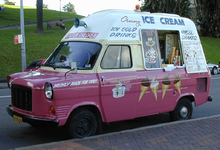


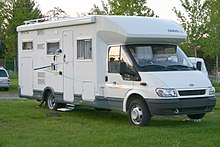

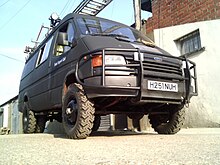
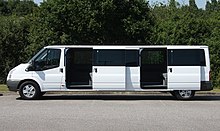




![Validate my RSS feed [Valid RSS]](valid-rss-rogers.png)















































































ไม่มีความคิดเห็น:
แสดงความคิดเห็น